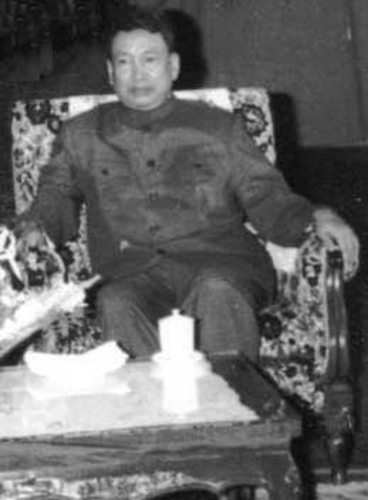Noiser
Pol Pot: 5 Chilling Facts You Didn't Know
Play Real Dictators Pol Pot Part 1: Tyrant in the Shadows
Pol Pot, born Saloth Sar in 1925, was the leader of the Khmer Rouge and the Prime Minister of Democratic Kampuchea from 1975 to 1979. His reign is infamous for one of the most brutal genocides of the 20th century, during which an estimated 1.5 to 2 million Cambodians—about a quarter of the population—died.
Here are five facts about the dictator.
Pol Pot Studied in Paris
Before becoming a ruthless dictator, Pol Pot was a student in France. In 1949, he received a scholarship to study in Paris, but his real education came from the political underground. While in France, he joined a Marxist study group and became heavily involved with the French Communist Party. He read the works of Marx (who, by his own admission, he found confusing), Lenin, and Stalin and became convinced that Cambodia’s future lay in a radical communist revolution. Ironically, this Western influence played a significant role in shaping the anti-Western ideology he would later impose so violently.
He Wanted to Eliminate Cities Entirely
One of Pol Pot’s most extreme and defining policies was his decision to depopulate Cambodia’s cities.
The political instability in Cambodia during the Vietnam War provided fertile ground for the Khmer Rouge. The U.S. bombing campaigns in eastern Cambodia, aimed at disrupting North Vietnamese supply lines, drove thousands of peasants into the arms of the Khmer Rouge.
Just days after taking power in April 1975, the Khmer Rouge forced the evacuation of Phnom Penh and other urban areas. Millions of people, many of them sick, elderly, or children, were forced to march into the countryside to work in collective farms.
The goal?
To erase all traces of modernity, capitalism, and class division, and return Cambodia to an agrarian “Year Zero.” Cities were seen as corrupt and impure. In Pol Pot’s Cambodia, even the idea of urban life was to be destroyed.
He Abolished Money, Religion, and Private Property
Pol Pot believed that to build a true communist utopia, society had to start from scratch. Under his regime, money was abolished, banks were shut down, and all private property was seized.
Religious practices, notably Buddhism, which had deep roots in Cambodian culture, were banned. Monks were defrocked, temples destroyed, and religious leaders executed.
Wearing glasses, speaking a foreign language, or having soft hands, anything that suggested literacy or an urban background, could be a death sentence. The Khmer Rouge established thousands of prisons and execution sites across the country. The most notorious was Tuol Sleng, or S-21, a high school-turned-torture centre where an estimated 14,000 people were imprisoned and only a handful survived.
Intellectuals, professionals, ethnic minorities (especially Vietnamese, Cham Muslims, and Chinese Cambodians), former government officials, and even loyal members of the Khmer Rouge suspected of disloyalty were targeted. Entire families were often executed to prevent retaliation.
He Operated in Secrecy
Despite leading a regime that demanded absolute obedience, Pol Pot remained an elusive figure. During much of the Khmer Rouge's rule, the general public didn't even know who he was or what he looked like. He was referred to simply as “Brother Number One,” and many Cambodians had no idea who was really in charge.
Pol Pot's paranoia eventually extended to his own ranks. Even within the party, he kept tight control through secrecy and fear, regularly purging those he suspected of disloyalty. This secrecy enabled him to maintain power while spreading paranoia throughout his own regime's ranks.
He Was Never Tried for His Crimes
Despite being responsible for the deaths of up to 2 million people, Pol Pot was never brought to justice.
After being overthrown by Vietnamese forces in 1979, he fled to the jungle and continued to lead a weakened Khmer Rouge insurgency for years. In the 1980s and early 1990s, Cold War politics meant that some Western and regional powers, most notably China and even the United States, supported the Khmer Rouge in exile to counter Vietnamese influence in Southeast Asia.
In 1997, Pol Pot was arrested by Khmer Rouge defectors and placed under house arrest., A year later, in April 1998, Pol Pot died of a reported heart attack. He was never formally tried or punished for his crimes.
His death left many questions unanswered and justice incomplete. However, efforts to reckon with the Khmer Rouge era continued. In 2006, the United Nations and the Cambodian government established the Extraordinary Chambers in the Courts of Cambodia (ECCC), which has since convicted several top Khmer Rouge leaders of genocide and crimes against humanity.
The long shadow of Pol Pot’s regime still lingers in Cambodia. The country has struggled with trauma, political repression, and underdevelopment in the decades since. While young Cambodians learn about the genocide in schools, some older survivors remain reluctant to speak. The sheer scale of loss, and the fact that fellow Cambodians inflicted it, has made national healing an arduous process.
